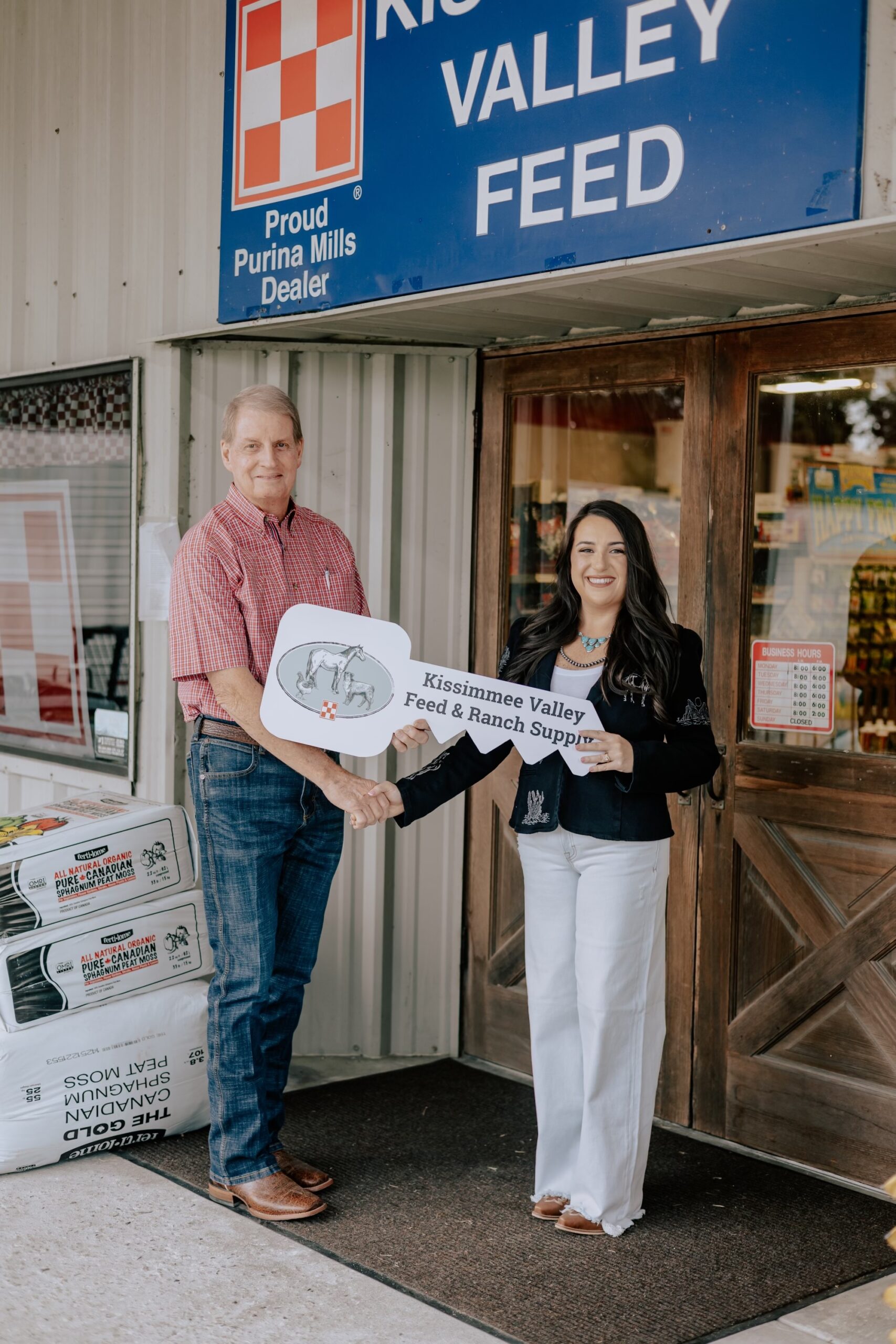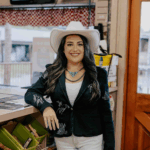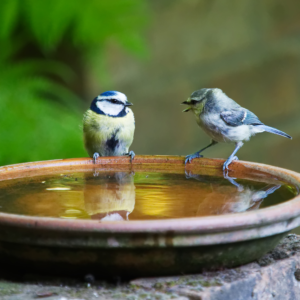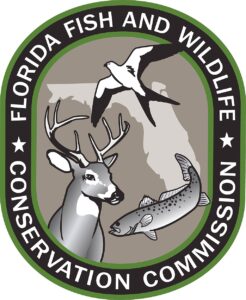 Stan Touchstone is Handing Over the Keys to Kissimmee Valley Feed (both locations!) After 34 years of hard work, dedication and integrity, Stan has sold the business to Samantha Holloway. They made it official on Wednesday, September 3, 2025. Samantha has been managing the Main Store for the past seven years and is very excited to take the reins and continue the legacy of your favorite hometown feed stores.
Stan Touchstone is Handing Over the Keys to Kissimmee Valley Feed (both locations!) After 34 years of hard work, dedication and integrity, Stan has sold the business to Samantha Holloway. They made it official on Wednesday, September 3, 2025. Samantha has been managing the Main Store for the past seven years and is very excited to take the reins and continue the legacy of your favorite hometown feed stores.
Stan will still be around, but he’s looking forward to spending time with his beloved wife and daughter, Lisa and Mattison. We are SO excited for both Stan and Samantha as they enter uncharted and exciting territory. Kissimmee Valley Feed will remain the same feed store you know and love in Osceola County.
In celebration, we’re hosting a retirement party on September 6th from 8 am-2 pm at the Main Store, where you can wish Stan the best of luck, meet Samantha, and take advantage of HUGE savings! Food and drinks will also be provided. Read all about it here.
About Samantha

Samantha is a Osceola County girl, born and raised here in St. Cloud. She has years of experience, starting from a part time sales associate in pet retail to a store manager who helped build out a store: then she met Stan.
After hearing about Samantha’s good work from a friend, Stan set up an interview and immediately had full confidence in her. She’s put her heart and soul into Kissimmee Valley Feed for the past seven years, learning everything she could from Stan. Samantha says he’s been the best mentor she could’ve ever asked for.
Samantha says things won’t be changing at Kissimmee Valley Feed. She plans to keep it the same as it has been for the past 34 years with Stan – she wants the same hometown feeling; the customers to feel welcome as soon as they walk through the door. The loyalty cards aren’t going anywhere! She still plans to stay active in the community, supporting the 4H youth; and all the beautiful traditions Stan started…but she does want to give the store bathroom a good facelift!
She’s looking forward to focusing on both stores and is excited to watch them grow.
What’s Next for Stan?

First things first: for Stan AND his wife Lisa, there will be no more waking up at 3 in the morning and being at the store at 3:30 am! So…maybe they’ll sleep in until at least 5! Stan and Lisa are going to travel and spend time with their cherished daughter Mattison.
Stan started the process of getting ready to make the transition to retirement about three years ago. It was a lot of work and he knew all along that Samantha was the right person for it. Fast track to this year – he had a big health scare on Easter Sunday – both Samantha and Stan thank God for looking over him. As if by divine intervention, Samantha was able to take over the store while Stan recovered. She took good care of it, and now she’s bought it!
Stan said he loves the store and plans on still being around! He says the store has been really, really good to him and his family. He, his wife, and daughter have all put in so much work together. They’ve had 34 good years, living his dream and now Stan is Handing Over the Keys to Kissimmee Valley Feed to Samantha so she can live her dream.
Kissimmee Valley Feed Origin Story

34 years ago in 1991, Stan opened the doors to the store. One of the first sales was $42 – he remembers it well. Later that week, the first commercial account was Gatorland Theme Park, the owner Earnest came in to start doing business with Stan, and still does to this day. It’s been a long time.
Stan wants to thank people from the early years – he remembers Mrs. Bates, whose ranch he worked on before he started the store. Mrs. Bates always went to feed stores for her ranch supplies and would fuss about how dirty the stores were. So when Stan opened Kissimmee Valley Feed, he kept Mrs. Bates in mind – wanting to create a store where Mrs. Bates and all the rancher’s wives would be happy to walk into. He wanted to sell the very best products whether it was hay or feed.
They started out focusing on cattle and horses – about the only things in Osceola County. But things have definitely changed. They struggled the first few years open but kept growing and making it work, with a lot of effort and love. Stan gives many thanks to the amazing people who have worked for him and every customer who has walked through the doors. He especially wants to thank Lisa and Mattison who were there every step of the way.
They continued growing and expanding the show room. In late 2018- early 2019, a second location was opened as a pet store that is continuously bringing in new inventory and improving. Stan feels blessed by God. The rest is history, and now there’s a new chapter unfolding. We can’t wait to share it with you.
























 When it comes to Old Florida Farms products, the company is a grower, packer, and distributor of foods and other products unique to Florida. This month we’re featuring their delicious sweet treats: Keylime, Praline and Sweet Heat Pecan Halves. Visit us at the Main Store and grab a jar (or two, or three) for yourself!
When it comes to Old Florida Farms products, the company is a grower, packer, and distributor of foods and other products unique to Florida. This month we’re featuring their delicious sweet treats: Keylime, Praline and Sweet Heat Pecan Halves. Visit us at the Main Store and grab a jar (or two, or three) for yourself! Fall Pet Allergies: As the heat and humidity of the summer begins to wane, many of us look forward to the cooler, fall weather and, at least in the northeast, the beauty of the changing foliage. For many of us including our pets, this change of season is the start of fall allergies.
Fall Pet Allergies: As the heat and humidity of the summer begins to wane, many of us look forward to the cooler, fall weather and, at least in the northeast, the beauty of the changing foliage. For many of us including our pets, this change of season is the start of fall allergies. Summer is a season of warmth, vibrant colors, and the joyful chirps of wild birds. For many, there’s something magical about having a variety of feathered friends visit your backyard. Whether you’re an experienced bird enthusiast or just starting out, attracting wild birds during the summer months can turn your garden into a bustling hub of nature’s beauty. Here’s how you can transform your outdoor space into a bird paradise.
Summer is a season of warmth, vibrant colors, and the joyful chirps of wild birds. For many, there’s something magical about having a variety of feathered friends visit your backyard. Whether you’re an experienced bird enthusiast or just starting out, attracting wild birds during the summer months can turn your garden into a bustling hub of nature’s beauty. Here’s how you can transform your outdoor space into a bird paradise. Florida Fish and Wildlife Conservation Commission released the 2025 – 2026 Florida Hunting Season Dates. Check them out below! You can find more information on
Florida Fish and Wildlife Conservation Commission released the 2025 – 2026 Florida Hunting Season Dates. Check them out below! You can find more information on